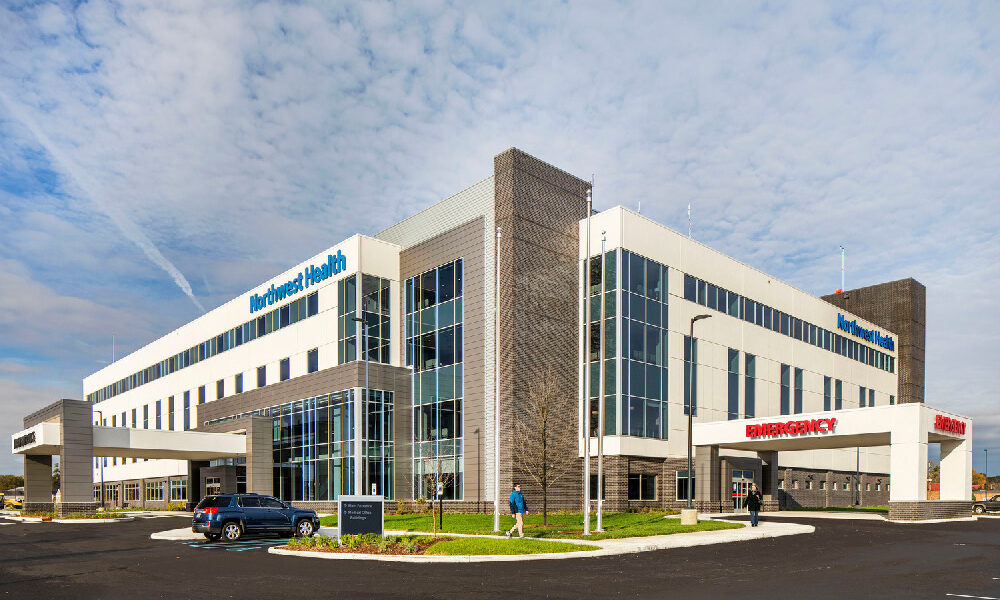 The planning, facility improvements and measurements needed to meet higher wellness standards are natural extensions of typical healthcare sustainability initiatives.
Photo by: Chad Baumer
The planning, facility improvements and measurements needed to meet higher wellness standards are natural extensions of typical healthcare sustainability initiatives.
Photo by: Chad Baumer  Strategy and goal setting for sustainable healthcare projects once focused primarily on modeling anticipated outcomes for energy efficiency and replicating previous success. Today, additional sophisticated models and tools help estimate impact metrics.
Photo by: Miami In Focus
Strategy and goal setting for sustainable healthcare projects once focused primarily on modeling anticipated outcomes for energy efficiency and replicating previous success. Today, additional sophisticated models and tools help estimate impact metrics.
Photo by: Miami In Focus Subscribe Now
3 Strategies for Overcoming Challenges of Carbon Reduction in Healthcare Projects
By Jackie Mustakas
In recent years the construction industry has been managing additional obstacles, including material procurement challenges, labor shortages and working to navigate applicable mandates and available incentives. Within the healthcare sector, there is also a heightened focus on wellness, community support and resiliency that further influences the decision-making process. These factors, in addition to meeting each health system’s internal goals for transparency and sustainability reporting, generate an unprecedented need for experienced, cross-disciplined project teams.
Fortunately, many teams that work in healthcare construction are already predisposed to collaborate at a high level, and that partnership mentality often leads to innovative solutions and improved project outcomes. Experienced healthcare design and construction teams bring individual knowledge about emerging best practices and synergistic, sustainable strategies.
To capitalize on this collective knowledge, team members from all disciplines must be supported, engaged and encouraged to prioritize sustainable outcomes within their decision-making models.
Metric-based strategies: employing lifecycle assessments
Strategy and goal setting for sustainable healthcare projects once focused primarily on modeling anticipated outcomes for energy efficiency and replicating previous success with equipment and material selection. Today’s teams utilize additional sophisticated models and tools, such as lifecycle assessments, that help estimate impact metrics associated with a building or product.
Beginning with raw material extraction and extending through production, transportation, maintenance, and ultimately deconstruction and disposal, a whole building LCA measures the cradle-to-grave environmental impact, typically focusing on a building’s structure and enclosure, to empower teams to make early, impactful design decisions.
The practical benefits of this LCA include forecasting a building’s baseline metrics and making strategic adjustments in materials or design to show a reduction in embodied carbon and carbon emissions over the proposed building’s life. Teams can input alternatives into the software to see the reduction in risks associated with global warming, ozone depletion, acidification of land and water sources and other impact categories. With this knowledge, teams can balance those outcomes with other project priorities, such as healthcare system preferences, first cost and material availability.
Product LCAs also measure environmental impact, but typically exclude impacts once the product leaves the manufacturer. Comparing the impact categories quantified within LCAs for similar products, or replacement products at the appropriate quantities, can help teams reduce carbon emissions on a smaller, yet still impactful scale.
LCAs in action
In the design phase of a recent healthcare project in Florida, Robins & Morton and our design partners generated an LCA that helped define how adjustments to certain structural and nonstructural concrete mix would reduce environmental impact. Our trade contractors and suppliers worked closely with the structural engineer to determine which mix designs were able to reduce embodied carbon, available and appropriate for the project region, capable of maintaining strength and resiliency, and unlikely to cause adverse impacts on the construction timeline.
On this same project, our team recommended adjusting the equipment selection within the hospital’s central energy plant; downsizing the equipment would lower the first cost for the client without jeopardizing the energy reduction and operational carbon goals for the project.
We were able to generate an improved solution by establishing early on that all team members are working toward a shared goal. With this team and many others, we hold supplementary collaboration sessions, not specific to any project, to enhance relationships, grow our collective knowledge and to continue improving our future services to building owners and the community.
Promoting wellness through healthy buildings
One of many adjustments coming out of the pandemic is the increased priority of a building’s role in occupant health and well-being. Wellness initiatives benefiting patients and caregivers have always been an operational focus of clients, but are now prioritized more consistently during design. Recent nationwide labor shortages have caused many employers, not only those in healthcare, to consider opportunities to improve the physical and mental health of the people occupying their spaces.
One response is interest in WELL and Fitwel certifications. The certifications offer frameworks for healthy workplace standards and wellness best practices supported by objective and evidence-based measurement.
Organizations and facilities that demonstrate success across a measurable series of health-related outcomes can earn certification. Healthcare systems are adopting these benchmarks to improve patient comfort and satisfaction and to help differentiate themselves as an employer.
Validation tools such as health product disclosures have become more readily available in recent years, thanks to requests from designers and contractors and to manufacturers’ commitment to transparency. HPDs are ingredient labels for products that can assist with the elimination of ingredients that threaten human health and the greater ecosystem. Teams can rely on these comprehensible documents to consider less harmful products and balance wellness metrics with other priority sustainable outcomes for a building.
Measurement and reporting
The emergence of recent technology and benchmarking data to validate sustainability goals, wellness initiatives and carbon metrics will also assist clients with measurement and reporting requirements, both today and in the future. For some healthcare systems, these might include:
- Reporting to community, investors and government stakeholders: Expectations for environmental, social and governance reporting continue to rise, requiring organizations and their construction teams to comprehensively disclose energy use, GHG emissions, diversity and inclusion metrics and sustainability goals and outcomes.
- Reporting to hospital staff: Employees are a vital stakeholder group in achieving and promoting sustainable spaces. Research shows that employees want proof of progress and tangible wellness outcomes within their workplace. Data showing design and construction strategies promoting mental well-being, healthy product selection and improved air quality can support retention and employee engagement.
- Patient convenience and comfort: A sustainable hospital with thoughtful leadership on patient safety, comfort and well-being will likely succeed in attracting consumers who have options when choosing a healthcare facility. Documented progress and transparency on a hospital’s commitment to a sustainable, healing environment can provide a competitive advantage for healthcare systems.
Future glance: continued collaboration and rationale
Looking ahead, the best days for sustainability — and the most dramatic breakthroughs — are still to come. A strong indication is the collective commitment of the design and construction industry’s efforts to further reduce carbon emissions. Architecture 2030, MEP 2040, SE 2050 and the Contractor’s Commitment are examples of the industry’s pledge to improve the built environment.
Perhaps the most promising sign is this motivating, expansive human factor. A growing force of sustainability advocates and champions inspire us to consider new and bold approaches to solving what we know are urgent and consequential challenges. Working together, we can create, enjoy and pass along a healthier, more efficient and more prosperous built environment.
Author: Jackie Mustakas
Jackie Mustakas is senior sustainability manager at Robins & Morton.
Tags: Carbon Reduction, lifecycle assessments, Robins & Morton
Posted October 18, 2023
More Articles:
- IFMA’s Facility Fusion Conference & Expo
May 5, 2024 – May 7, 2024 - ASHE Academy 2024
May 6, 2024 – May 10, 2024 - World Conference on Quality & Improvement
May 12, 2024 – May 15, 2024 - ACEC Annual Convention & Legislative Summit 2024
May 13, 2024 – May 16, 2024 - 2024 Annual Clinical & Scientific Meeting
May 17, 2024 – May 19, 2024 - CleanMed 2024
May 21, 2024 – May 23, 2024 - Hospital, Outpatient Facilities & Medical Office Buildings Summit
May 22, 2024 – May 22, 2024










